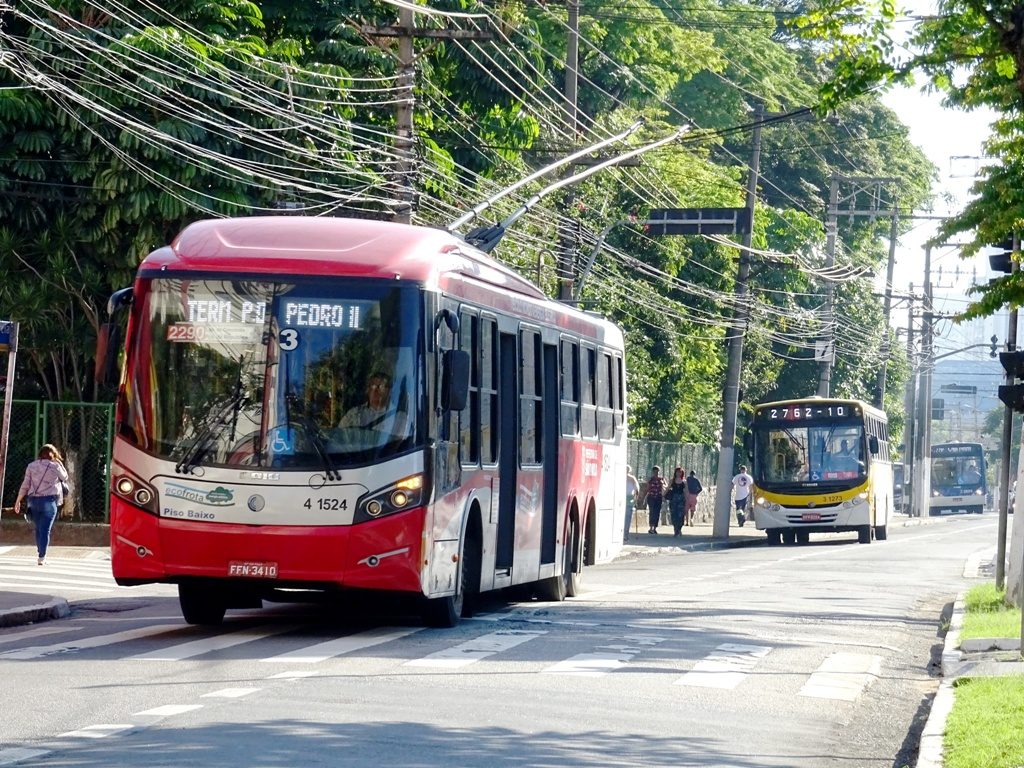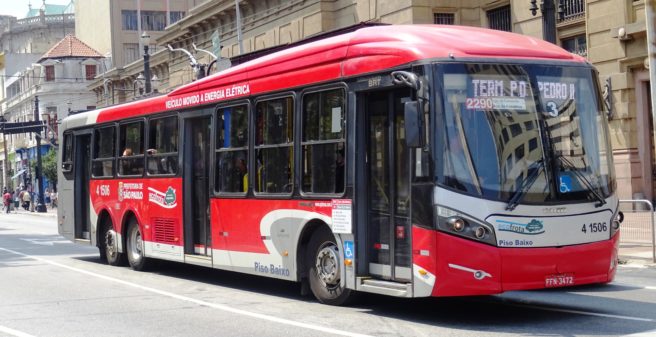
Although trolleybuses only survived in two Brazilian cities (São Paulo and Santos), the technology is still considered as very beneficial if well implemented and operated. At a time when discussions about the best emission-free model of urban buses for Brazilian cities are taking place, the trolleybus has its well-merited position in the Brazilian public transport landscape. However, the trolleybus has also been questioned about the level and necessity of investments needed which are, in the first place, higher than for conventional diesel buses. As most of our readers know, trolleybus run fully electric and can be powered with renewable energy (electricity from hydroelectric plants) with a vehicle model adapted perfectly to requirements of Brazilian cities and the world. As a result, trolleybuses do not emit any pollutions, they run entirely silent and provide a considerable reduction in dependence on the use of fossil fuels.
The so-called „trólebus“ emerged in Brazil in 1949, with São Paulo being the first city to adopt it. In addition to pioneering, the then-capital of São Paulo was also the inspiration for other cities around the country to choose this transport mode. The São Paulo system was guided by new ideas and concepts as a way to provide to integrate the different transport modes, structure the network and meet a significant demand for passengers.With increasing car ridership and congestion issues, the São Paulo of the 1950’s was starting to suffocate in traffic. As a result of this, a highly innovative plan for the improvement of the mobility and urban structure was presented. Its name, SISTRAN, was the first stone in the history of Brazil’s bus improvement initiative. SISTRAN foresaw segregated bus lanes and modern vehicles. If put into practice, this project would have given a concept of modernity to the bus at that time.
However, since then, history was interrupted by the lack of investment and interest of municipal public administrations that have followed over the years and decades. And what was supposed to be a revolution was just a small step toward the future of electromobility in the public transport sector. Today, the trolleybus has only a small part in São Paulo’s transport mix, but it is still fundamental in the ABD metropolitan corridor, which connects the capital to the cities of Santo André, São Bernardo do Campo, Diadema and Mauá.The 70 years of trolleybus in Brazil celebrated in 2019 come in handy to propose a reflection on the advantages and benefits that the trolleybus has on urban life. Among its characteristics, we can highlight its high transport capacity and cleanliness, being recognised as a viable option from a technological, environmental and economic viewpoint for the new reality of urban mobility systems. As electric buses are on the rise today, different vehicle configurations are appearing as a market alternative. Among them are trolleybuses that incorporate a batteries as auxiliary traction system for operation without catenary or during electricity breaks.

Our cooperation partner, the AutoBus magazine interviewed Ieda Oliveira, director of Eletra, a Brazilian manufacturer of electric buses, and Roberto Berkes, electrical engineer and coordinator of the Electric Bus/Trólebus Work Group of LATAM Latin America, about an overview lived by modal and its future in Brazil.
Interview:

AutoBus Magazine: Is the trolleybus seen as something obsolete in Brazil and Latin America? If so, why does that happen?
Ieda Oliveira: Unfortunately, yes! The trolleybus is always compared with the diesel bus and by relying on the catenary it is seen as an obsolete transport. Others say the overhead wire leaves the city “ugly,” as if the tangle of cluttered wires that occupies 98% of our roads did not exist. There is a certain prejudice and people do not evaluate the trolleybus system as a solution for sustainable transportation which brings economic and operational benefits to the transportation system.
Roberto Berkes: Die meisten Städte in Brasilien haben keinen Bezug mehr zu elektrischen Verkehrssystemen wie Straßenbahnen und Trolleybussen. In Brasilien gab es zwischen den 1920er und 1960er Jahren 11 Obus-Systeme und eine große Anzahl von Straßenbahnsystemen, vor allem in den Provinzhauptstädten. Aber heute sehen sowohl die Bevölkerung als auch die Unternehmer elektrische Verkehrssysteme nicht als Option.
For the latter, trolleybuses are obsolete because they refer to the systems that existed in the past, often associated with the replacement of tram lines, without taking into account the technological development of today.
So, yes, for the large portion of the politicians and social classes, in Brazil and Latin America, the trolleybus is obsolete.
AutoBus: Isn’t the environmental character sufficient for your image to be attractive to the government and the transport managers?
Ieda: We are living in a world of little studies and many guesses. From an environmental point of view, both trolleybuses and pure electric buses (with batteries) are important solutions to reduce emissions, increase efficiency and reduce dependence on fossil fuels. Certainly, if technical, economic and environmental feasibility studies are presented in public policy decisions, the „trólebus“ will have its space and its attractiveness, especially when combined with battery technology.
Berkes: The character of environmental protection is severely ignored by the government, the majority of the population and entrepreneurs, in all sectors, including energy and transportation. So, it is difficult to convince them all from the benefits in terms of environmental protection in the various sectors.
AutoBus: We know the viability for trolleybuses is proven right here, with the example of the ABD corridor (metropolitan region of São Paulo). With positive operating conditions (pavement, road exclusivity, good maintenance), is it possible to achieve advantages and benefits?
Ieda: The ABD Corridor is an example of success, as it operates predominantly with a fleet of trolleybuses and is evaluated by the user as the best transport system in the country. If the trolleybus system were outdated or problematic, the ABD corridor would not have such a positive feedback. Today, with the evolution of technology, trolleybuses gain more flexibility. Thanks to traction batteries, the efficiency and availability of the trolleybus system is improved, the electrification of depots can be avoided and the operation of the trolleybus is ensured in situations of failure in the catenary network or lack of energy.
Berkes: The model of the ABD Corridor is simply perfect for the trolleybus system. Electric traction is very effective for use in medium and high capacity corridors, as they aggregate the technical values (higher speed and acceleration, higher torque of engines, 90% energy yield versus about 30 or 40% of diesel or gas propulsion systems and lower maintenance costs), environmental (reduction of air and noise pollution) and greater comfort. So in this corridor, it is still possible to increase its efficiency, because ten years ago it was completely re-enhanced, which ensures that the current fleet, with about 80 vehicles, can be doubled in the coming years, on the occasion of a new concession of operation.
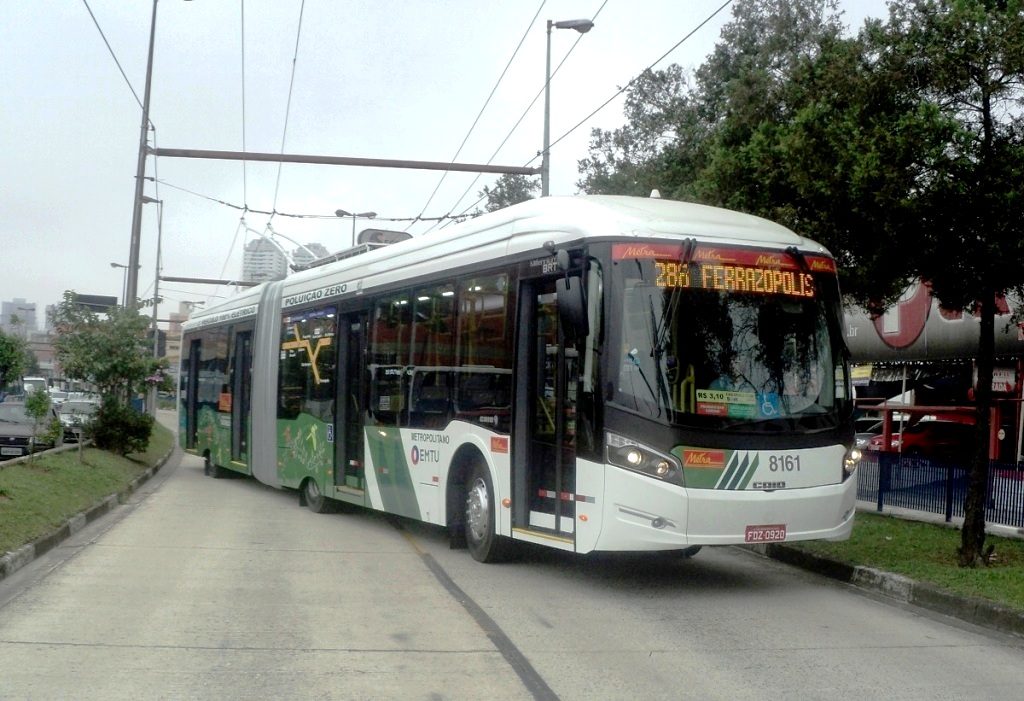
AutoBus: There are some European cities that have not given up on trolleybuses and continue to invest in the modernization of fleet and traction technology. In your opinion, what virtues does it need for this ecological vision?
Ieda: The main motivation is the awareness that it is necessary to reduce the emissions of each transport system. Why trolleybuses? Well, when compared to pure electric buses (with batteries), the vehicle has a great advantage that justifies the investment in network infrastructure and substations, with an expected long-term service life. For electric buses there is also a need to invest in infrastructure for battery recharging, but the disadvantage is that large battery systems have a life-expectancy of approximately eight years. Thereafter, they have to be renewed. This does not mean that the trolleybus is simply and everywhere better than pure electric buses. Only that each technology has advantages and disadvantages depending on the system where it will be applied.
Berkes: The difference between “first world” countries, such as those in Europe compared to Brazil, is precisely environmental awareness, quality of life and preservation of goods. Thus, the already known advantages of traditional tram, light rail and trolleybus systems tend to continue and improve. Why change a concept that’s working and is good? Still talking about popular and business awareness about the environment, Europe mainly is a leader in reducing global warming, which ends up influencing projects in all sectors, especially energy and urban transport. As a result, the modernization of tram and trolley bus systems ends up being the most logical solution.
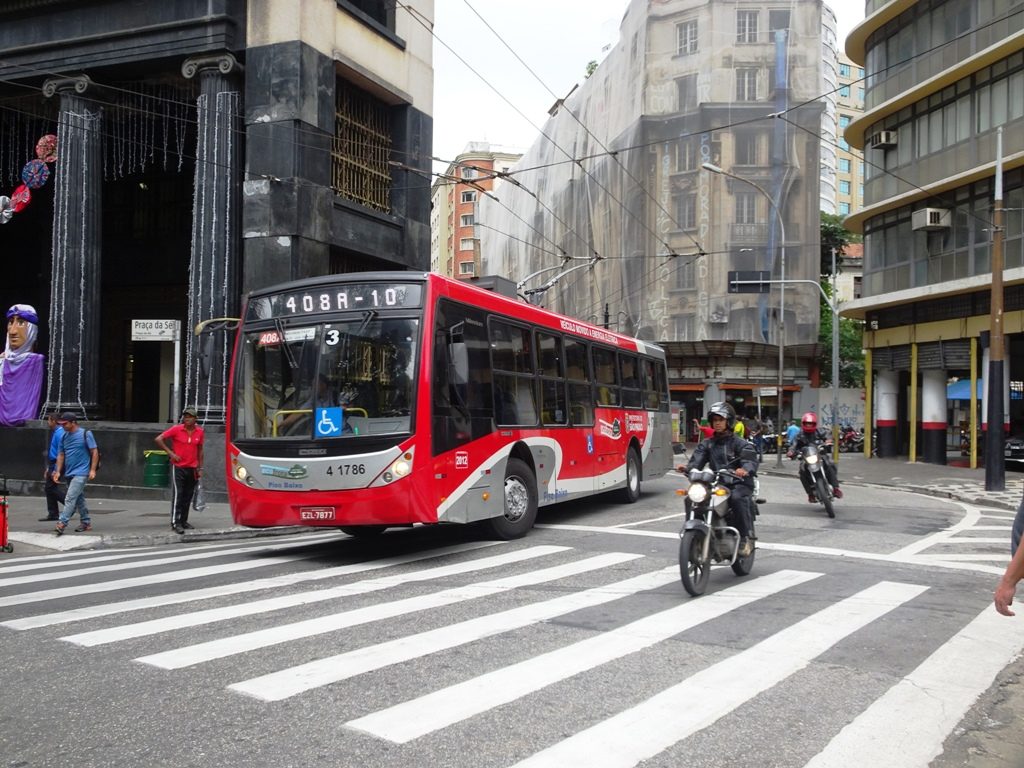
AutoBus: There is also a mobilization in the European market in such a way that trolleybuses with additional traction batteries are being implemented. This technology allows vehicles to run in areas without the catenary network. Do you see this mode as certain in the survival of the trolleybus?
Ieda: It is not about survival, it is about seeking the best technology for specific zero emission transport systems.
A high-demand corridor with larger vehicles does not find technical solution with batteries, as they would require a large amount of them, which would result in more weight. Even if there was a technical feasibility, we have the financial unfeasibility, considering the costs of batteries in the acquisition and renovation.
Now, if we add the trolleybus with batteries, we have technical and financial viability for the zero emission system. Trolleybuses would be fitted with a small battery bank for operation without catenary. When reaching the electrified main corridor the collecting levers are automatically connected to the network and so the electrical system is powered by this network that also charges the batteries. In this way, investment in infrastructure can be reduced in the long term and batteries have longer life expectancy and reduced investment (both in acquisition and renewal).
Berkes: Certainly! The battery development is bringing to the trolleybus system the ideal solution for its main problem, which is the dependence on the catenary network. That is, the main “problem” that is both criticized, in the failures of its power source. It will now cease to exist with the adoption of sufficient battery banks for operation on large stretches of routes without catenary. It also allows for deviations in the day-to-day operation and to extend lines, without investments. And since there is already the electrical infrastructure, it is easy to charge batteries, without investments in large additional substations. This solution has certainly contributed to the survival of trolleybus systems. These vehicles become “free” of their network, just like other types of buses, because at any time they cam use the energy of batteries.
AutoBus: Much is said about electric buses with batteries as the future of public transport. But there are still some challenges, such as batteries themselves and their development, their recharge and the integration into the vehicles. Can we say that trolleybuses take advantage in front of the bus powered 100% to batteries?
Ieda: Pure electric buses and trolleybuses are excellent solutions for public transport, not only for the environmental issue, but also by noise reduction, greater passenger comfort, reduced operating costs, greater fleet availability, etc. There will be transportation systems where pure electric systems will have a better cost-benefit ratio and in other systems the trolleybus will perform better. The big question is not to discard one or the other option simply by guesses and assumptions without a complete study of the system. I believe that for high-demand systems the battery trolleybuses will have greater viability.
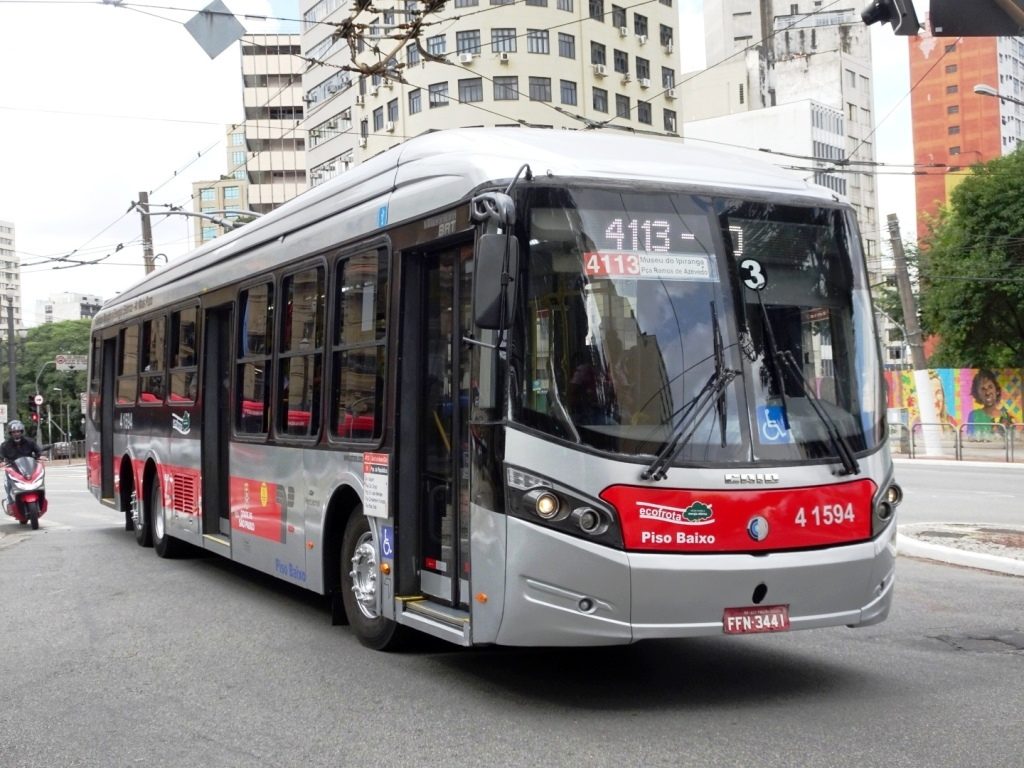
Berkes: The use of battery cars and electric buses had existed for 100 years and, in the case of the car, there was an attempt to revive its use in the 1970s, but which was crushed by the powerful oil industry.
What we observe today is the rapid development of technology and types of batteries, which is again leading to the idea of reactivating this model. Once again, the most developed countries, as in Europe, are seeing this resurgence as a good solution for urban transport. Or in Asian countries, especially in China, where this technology is already a reality to address its serious air pollution problems.
Battery buses are more expensive than trolleybuses, because in practice the two vehicle types are identical in the traction design. The difference is that electric buses have the battery energy source on-board whereas in the case of the trolleybus, the energy comes from the external grid. And it is precisely the price of batteries that is still high, especially in Brazil, where, unlike many countries, urban transport has become a business and not an assignment of the government, as it was in the past. Still in the economic aspect, batteries could have a lifespan of five to seven years, which would require the replacement of battery banks once again over the life of electric buses that is 15 to 20 years.
Comparing trolleybus vs. electric buses to batteries, what will weigh is the cost of electrical infrastructure. For the trolleybuses this is the implementation of the catenary network and smaller substations along the routes and for electric buses, the implementation of large substation in depots and in some terminals or stops.
The advantage of the trolleybuses is that the network infrastructure feeds the entire fleet “at the same time” in which they are operating and transporting passengers, using the more modern models equipped with autonomous traction batteries. In the case of battery buses, they need to “stop” while they are being charged. This charging stop may coincide with the early morning period while in the garage, however, this solution can be complex if there is a large fleet of vehicles to be loaded at the same time, as there will be a need to install a high substation punctual power, in this case, in the depot.
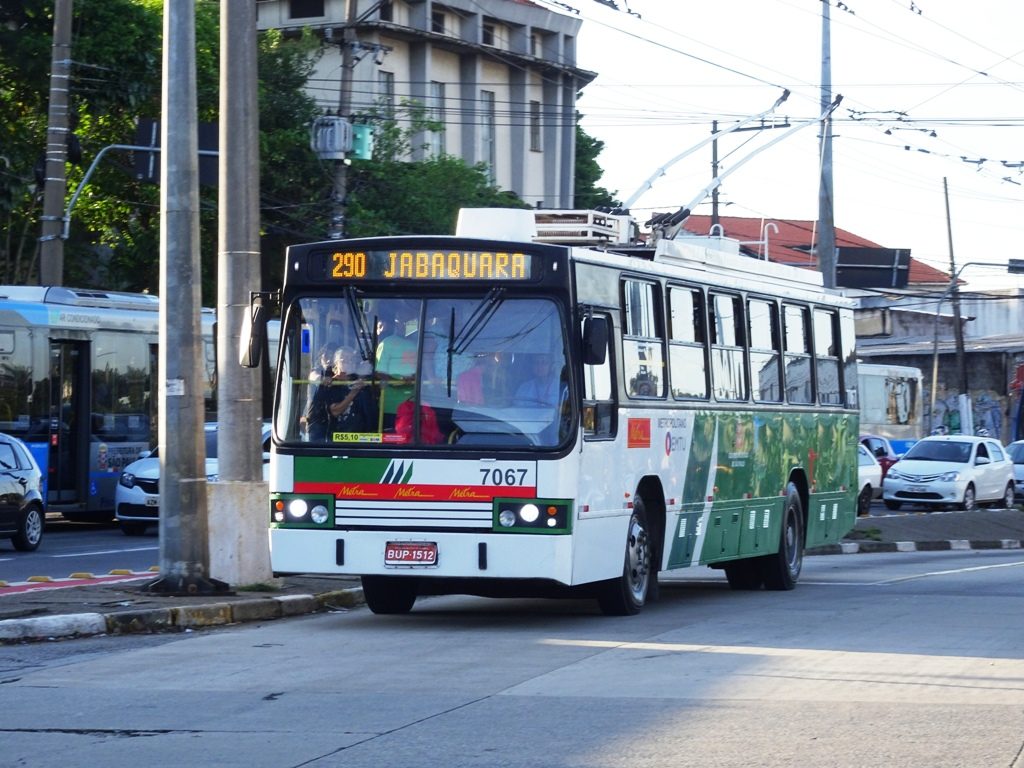
AutoBus: ELETRA has already developed this technological concept of trolleybuses with batteries, correct? How does it work to make her efficiency visible to opinion makers?
Ieda: Yes, we already have a trolleybus with ELETRA technology and autonomy circulating in the city of Wellington (New Zealand), ABD Corridor and SPTrans System. We are bringing up the discussion seeking a long-term analysis of the transportation system. It is necessary to recognize the advantages of the trolleybus system by embarking on new battery technologies, giving flexibility and reliability for passenger transport.
AutoBus: Does the trolleybus have a future in Brazil?
Ieda: I have no doubt that it will be an important solution for transportation in the major cities of Brazil.
Berkes: It will depend exclusively on the authorities governing public transport policies and including in their planning of urban mobility plans the implementation of projects, which aim at environmental improvements, quality of life, that is, socio-environmental balance. There is a trend today for light rail, which is nothing more than modern trams, but the trolleybuses in relation to them have a similar passenger capacity and quality, it is also electric, brings the same urban qualification, but the infrastructure is about 1/3 cheaper and with much faster deployment, because it is free from the complex installation of rails and tracks. And the trolleybus, in addition, has 100% national technology.
AutoBus: Is the national industry prepared to serve the market?
Ieda: With absolute certainty and security, the national industry is prepared to meet this demand, which will grow not only in Brazil, but throughout Latin America. ELETRA is the only manufacturer of trolleybuses in Latin America and we are able to put Brazil at the top of this rising market.
Berkes: The design of the current trolley bus model for our industry has brought important technological innovations that have greatly reduced costs.
We can highlight the use of the traction shaft, which is now the same used in diesel-articulated buses. In the past, the axles were special for electric traction, purchased on demand. The current engines are of alternating current type, which are produced in industrial line and minimum maintenance. In the past, the engines were of the direct current type, acquired on demand and complex maintenance.
Combined with the new chassis design with low floor, up to half of the bodywork, current Brazilian trolleybuses can be compared to the most modern abroad, with our industry being able to produce large fleets of electric buses.
AutoBus: What is the investment in the deployment of a network and what is needed in terms of infrastructure?
Berkes: When the electrification of the ABD Corridor was completed in 2011 between Jabaquara and Diadema (Piraporinha) terminals, the investment value per kilometer was $1.2 million, with the deployment of rectifier stations every 900 meters and the air network in current.
Obs – Jorge Françozo, of the Respira São Paulo movement, collaborated with engineer Roberto Berkes in his answers.
Table – Trolleybus systems in Latin America:
Mexico City, Mexiko Guadalajara, Mexiko Quito, Ecuador Mendoza, Argentinien Rosario, Argentinien Córdoba, Argentinien Valparaíso, Chile São Paulo (2 Systeme), Brasilien Santos, Brasilien
Source: https://www.trolleymotion.eu/trolleystaedte/
